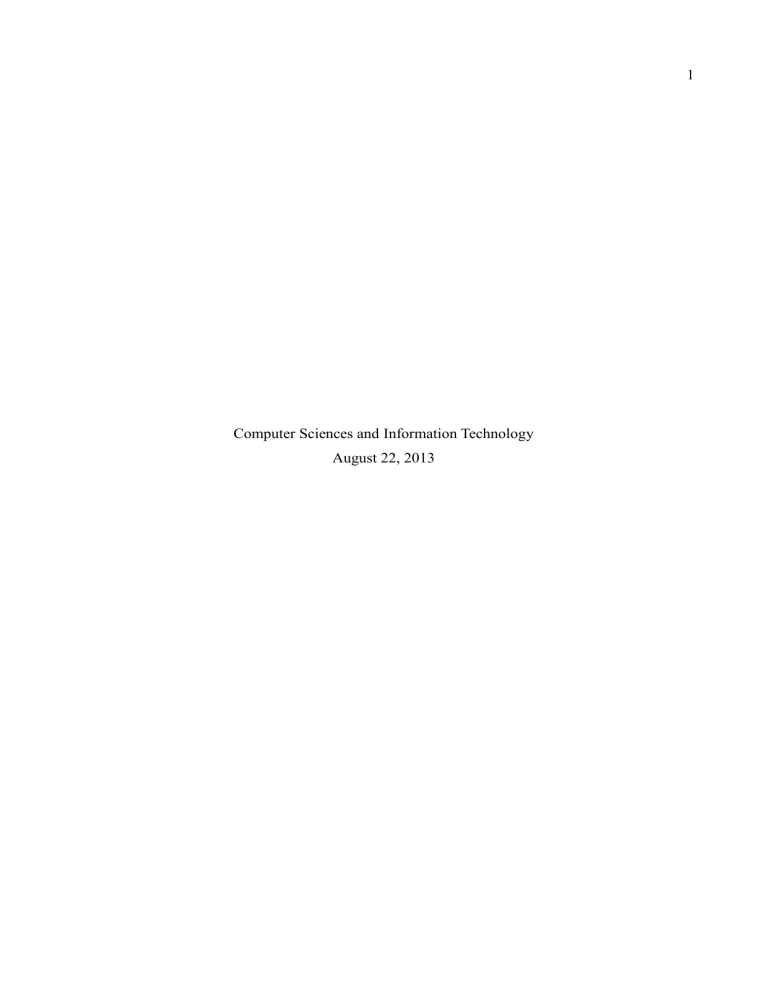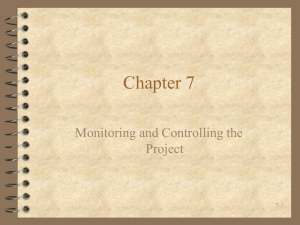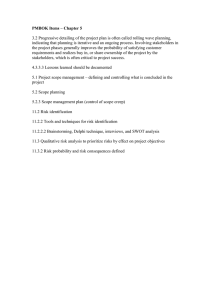
1 Computer Sciences and Information Technology August 22, 2013 2 1. Challenges in Identifying and Documenting IT Acquisition Requirements a) Ambiguity and Incompleteness One of the challenging issues encountered is dealing with vague and incomplete requirements. It occurs when users express their needs in ambiguous terms, leaving room for misunderstandings and misinterpretation between the client and the development team. Incomplete requirements may result from stakeholders' inability to foresee all aspects of the solution or the failure to engage all relevant people during the requirement elicitation process. To address the challenge, an open and clear communication between the development team and other stakeholders. It's necessary to conduct elaborate and detailed requirements elicitation sessions, with representatives from various disciplines and departments guarantee an all-inclusive understanding of the problem. Documentation of requirements should use clear language, supplemented by visual aids like prototypes and diagrams, to bridge the gap between users and stakeholders' expectations and the understanding of the development b) Requirement Creep/Scope Creep The second challenge in identifying and documenting IT acquisition requirements is scope creep. Scope creep refers to the nonstop and uncontrolled expansion of the project scope (Rudder A, 2022). Requirements creep results in the addition of new functionalities, features, or changes beyond the initially defined scope. It can cause an increase in costs, delays in projects, and reduced customer satisfaction. Scope creep may be a result of incomplete initial requirements, changing stakeholder expectations, or deficient change management procedures and processes. To address scope creep, it is essential to set up a robust change control process. The team can achieve this through prioritising and changes. Further, it is essential to assess their impact on the project's schedule, resources, and budget. In addition, there is a need to obtain appropriate approvals before implementing the changes proposed. Ensure regular communication with stakeholders to manage their expectations to prevent scope creep. Additionally, conduct a thorough analysis of requirements upfront to help identify potential requirement creep triggers and mitigate them early in the lifecycle of a project (Rudder A, 2022). 2. Deleting, Adding, and Changing Requirements Allowing changes to requirements later on, after approval up to the time a contract is signed may be advantageous in some situations. The nature of IT projects often involves rapid changes in market conditions, technology, competition, and market conditions, necessitating flexibility to accommodate new opportunities or address unforeseen challenges. Nevertheless, there is a need for 3 a controlled change management process to ensure that changes don't interrupt the project's overall goals, budget, and timeline. During a subsequent project, it is sensible to allow changes, except within limits. Small changes with insignificant influence the project scope, budget, or schedule may be allowable. Notwithstanding, significant changes should be subject to stringent impact assessment to guarantee that stakeholders understand the effect of these changes on the delivery of the project. 3. Work Breakdown Structure (WBS) Development. My project was a library system. In the process, I developed a work breakdown structure (WBS). A WBS helps to break down big projects into small manageable components(Wrike, n.d). I experienced the following; Successes/Easy Aspects: Breaking down the complex project into its major components was straightforward. I was guided by the project's chief objectives and key deliverables. I broke down deliverables into tasks smaller tasks, which felt natural. This helped me envision the library project's hierarchical structure. Difficult Aspects/Challenges I had difficulties defining boundaries between tasks. Some tasks overlapped in functionality, and I could not clearly ascertain where to draw the line. In addition, estimating task durations accurately was difficult due to resource availability, dependencies, and possible risks. Solutions to Challenges I involved team members with subject expertise in their respective areas. Brainstorming sessions refined task definitions and clarified dependencies. The team used project management software to make a dynamic WBS adaptable as the project evolved. Discussions on resource allocation and task boundaries lead to informed decisions. 4 References Alana Rudder, (2022), Scope Creep: Definition, Examples & How To Prevent It, Forbes Advisor, https://www.forbes.com/advisor/business/scope-creep/ Theo Thesing, Carsten Feldmann, Martin Burchardt, (2021), Agile versus Waterfall Project Management: Decision Model for Selecting the Appropriate Approach to a Project, Procedia Computer Science, Volume 181, Pages 746-756, ISSN 1877-0509, https://doi.org/10.1016/j.procs.2021.01.227. (https://www.sciencedirect.com/science/article/pii/S1877050921002702) Wrike n.d, What Is Work Breakdown Structure in Project Management? https://www.wrike.com/project-management-guide/faq/what-is-work-breakdown-structurein-project-management/






